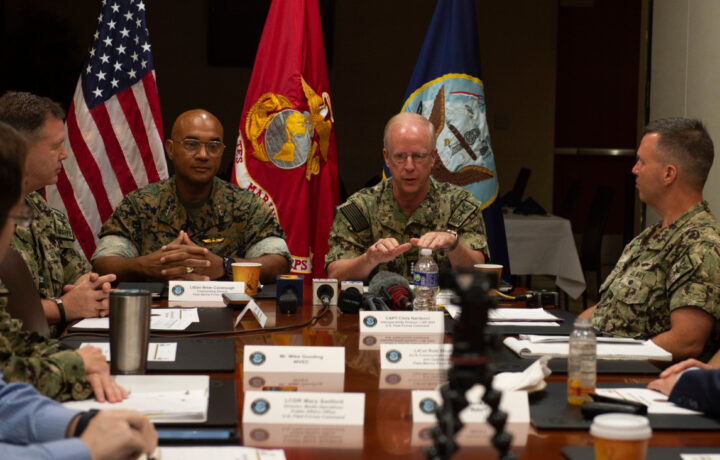The United States military’s involvement in the First World War was almost entirely in Europe; and while the subsequent Second World War saw U.S. forces engaged in combat around the globe, there was still little coordination in the different theaters of operation. World War II was really the U.S. military fighting multiple wars at the same time.
A future conflict could require greater synchronization of U.S. forces, which is why some 25,000 personnel from the U.S. Navy and U.S. Marines will engage in the aptly named Large Scale Exercise 2023. The event, which is scheduled to run from August 9 to 18, will involve six maritime component commands, and seven numbered fleets spread across 22 time zones.
LSE 2023 will further merge real-world operations with virtually constructed scenarios that were designed to create a realistic training environment that will allow sailors and marines to train the way they could fight, regardless of geographic boundaries. It will further feature nine Maritime Operations Centers, six carrier strike groups, and three amphibious readiness groups. That will include the Nimitz-class carriers USS Dwight D. Eisenhower, USS George H.W. Bush, and USS Harry S. Truman.
“The ability to command and control our operations across 22 time zones is how we will fight and win in a global environment against our competitors,” explained Adm. Daryl Caudle, commander of U.S. Fleet Forces Command, during a July 24 media event. “To do so, we have to globally synchronize precision and timing in order to conduct high-end modern warfare.”
Live and Virtual Training
LSE 2023 is also unique from other U.S. military exercises in that live training will be conducted by Sailors and Marines at sea, while those pierside or at a shore location will still participate virtually.
“Conducting these operations in a live, virtual, and constructive manner is key,” said Lt. Gen. Brian Cavanaugh, commander, Marine Forces Command. “From the tactical end where we have the Sailors and Marines doing operations on the ground or at sea, all the way up to the command and control aspect, our ability to synchronize and conduct those operations are critical.”
In that regard, LSE 2023 is as much about pushing those with stars on their shoulders and a chest full of ribbons as it is about providing additional combat training to the thousands of sailors and marines who will be taking part.
“We want to stress the three- and four-star admirals and their staffs at that operational level with large fleet-centric maneuvers. But we also want to stress all the way down to the individual sailor manning a radar station or marine at a weapons system. This exercise looks to encompass all of that,” Capt. Chris Narducci of the Fleet Forces Interoperability Division, told The Virginia Pilot newspaper.
Control of the Seas
Moreover, LSE was designed to reinforce the Chief of Naval Operations’ effort to set the stage for advancing naval doctrine and tactics by globally integrating fleet operations with emerging technologies to refine and validate Distributed Maritime Operations (DMO) capabilities.
“In the post-Cold War era and during the Global War on Terror, the seas were relatively uncontested. We were able to operate where we wanted to, at the time and place of our choosing,” added Narducci. “A lot of times we did so statically, remaining in the same location conducting the same operations day in and day out. And we were not threatened. However, times have changed.”
LSE is a triennial exercise that was first conducted by U.S. Fleet Forces Command, U.S. Pacific Fleet, and U.S. Naval Forces Europe in 2021. It was designed to refine how the U.S. military can synchronize maritime operations across multiple fleets, in support of the joint force – while future iterations to include partners and allies from around the world.




